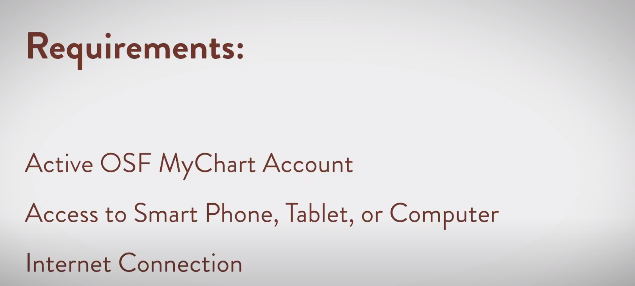Note-taking is a fundamental skill that plays a crucial role in a student’s academic journey. It is not merely a mechanical task of transcribing information, but an art that, when mastered, can significantly enhance learning, comprehension, and retention. In this comprehensive guide, we will explore the various aspects of the art of note-taking, offering practical strategies and techniques for students to optimize their study sessions.
Understanding the Importance of Note-Taking
Note-taking is not just about jotting down information; it is a dynamic process that engages your mind actively during lectures or while reading. Effective note-taking serves as a powerful tool for reinforcing concepts, organizing thoughts, and aiding in later recall. By summarizing and synthesizing information, students can transform raw data into a personalized knowledge repository.
Choosing the Right Note-Taking Tools
The first step in mastering the art of note-taking is selecting the right tools. While traditional pen-and-paper notes are still effective, digital options like tablets or laptops, which are becoming increasingly popular, offer versatility and easy organization. Experiment with different methods to find what suits you best, considering factors such as personal preference, learning style, and the type of information being recorded. In this process, you may also explore online resources that provide perfect essay services to enhance your note-taking skills and academic performance.
Active Listening and Engagement
The foundation of effective note-taking lies in active listening. Whether in a classroom setting or during independent study, engage with the material actively. Ask questions, participate in discussions, and seek clarification when needed. Active involvement not only enhances understanding but also provides context for the notes, making them more meaningful during later reviews.
Developing a Systematic Approach
A haphazard approach to note-taking can lead to confusion and inefficiency. Establish a systematic method that works for you. Consider the Cornell Method, where you divide your note paper into sections for cues, main ideas, and summaries. Alternatively, the mind mapping technique can help visualize connections between concepts. Experiment with different systems to discover the one that aligns with your learning style.
Prioritizing Information
Not all information is equal in importance. Learn to distinguish between key concepts and supporting details. Focus on capturing fundamental ideas, examples, and explanations. This not only streamlines your notes but also facilitates quicker reviews. Develop the ability to prioritize information in real-time, ensuring that you are capturing the most critical elements.
Utilizing Visual Aids
Incorporating visual elements into your notes can enhance comprehension and retention. Diagrams, charts, graphs, and illustrations can transform complex information into digestible formats. Visual aids not only make your notes more engaging but also cater to different learning styles, ensuring a more comprehensive understanding of the material.
Consistency in Format
Maintaining consistency in your note-taking format is essential for creating an organized and easily navigable set of notes. Whether you opt for bullet points, numbering, or a combination of both, stick to a format that suits your style and facilitates quick information retrieval. Consistency promotes efficiency and helps in creating a coherent narrative when revisiting your notes.
Review and Revision
The true value of note-taking emerges during the review process. Regularly revisit your notes to reinforce learning and identify areas that need further clarification. Consider incorporating a systematic review schedule, such as revisiting notes within 24 hours of the initial session and then at progressively longer intervals. This spaced repetition technique reinforces memory and ensures long-term retention.
Collaborative Note-Taking
In collaborative learning environments, sharing and comparing notes with peers can offer different perspectives and insights. Discussing complex topics with classmates can fill in gaps in your understanding and provide alternative explanations. Collaborative note-taking not only enriches your own notes but also fosters a supportive learning community.
Adapting to Different Learning Environments
The art of note-taking is versatile and can be adapted to various learning environments. Whether in a traditional classroom, online lecture, or self-directed study, the principles of effective note-taking remain consistent. Be flexible in your approach, adjusting your methods to suit the specific demands of each learning context.
The Role of Educators in Promoting Effective Note-Taking
Educators play a crucial role in promoting effective note-taking skills among students. Effective note-taking is not only a valuable academic skill but also an essential tool for lifelong learning. Here are some key ways in which educators can contribute to the development of effective note-taking abilities in their students:
Modeling Techniques
Educators should model effective note-taking techniques during lectures or class discussions. This includes demonstrating different methods such as outlining, mapping, or Cornell note-taking system.
By showcasing good note-taking habits, educators provide a visual example for students to follow and emulate.
Provide Guidelines
Offering clear guidelines on how to take effective notes can be beneficial. This may include specifying what information to prioritize, how to format notes, and which abbreviations or symbols are acceptable.
Educators can share templates or examples of well-organized notes to give students a starting point.
Encourage Active Listening
Active listening is a foundational skill for effective note-taking. Educators can encourage students to engage with the material actively by asking questions, participating in discussions, and paraphrasing information in their own words.
Creating an interactive and engaging learning environment can enhance students’ ability to absorb and record information.
Emphasize Selectivity
Educators should highlight the importance of being selective in note-taking. Not every detail needs to be recorded. Students should learn to identify key concepts, main ideas, and supporting details.
Providing guidance on how to discern between essential and non-essential information is crucial for efficient note-taking.
Introduce Technology Tools
In the digital age, educators can introduce students to various technology tools that facilitate note-taking, such as note-taking apps, digital notebooks, or collaborative platforms.
Familiarizing students with these tools can enhance their ability to organize and access their notes efficiently.
Review and Feedback
Regularly reviewing and providing feedback on students’ notes can be beneficial. This can be done through one-on-one consultations, peer reviews, or class discussions.
Constructive feedback helps students refine their note-taking skills and correct any misconceptions.
Connect Note-Taking to Learning Objectives
Explicitly linking note-taking strategies to learning objectives helps students understand the purpose behind their note-taking efforts.
When students recognize the correlation between proficient note-taking and enhanced comprehension or academic achievement, they become more inclined to dedicate time and energy to honing this skill. This proficiency can extend to various aspects of their academic journey, including becoming a more adept learner and even a skilled college essay writer.
Promote Self-Reflection
Encouraging students to reflect on their note-taking practices can be valuable. Educators can guide students in evaluating what techniques work best for them and how they might improve their approach.
Self-awareness and reflection contribute to the ongoing development of effective note-taking habits.
Conclusion
Mastering the art of note-taking is a skill that pays dividends throughout one’s academic journey and beyond. By actively engaging with the material, choosing appropriate tools, and employing systematic strategies, students can transform note-taking from a mundane task into a powerful tool for learning, comprehension, and retention. As you embark on your educational pursuits, remember that the art of note-taking is a dynamic and personalized process, and finding what works best for you is the key to success.






